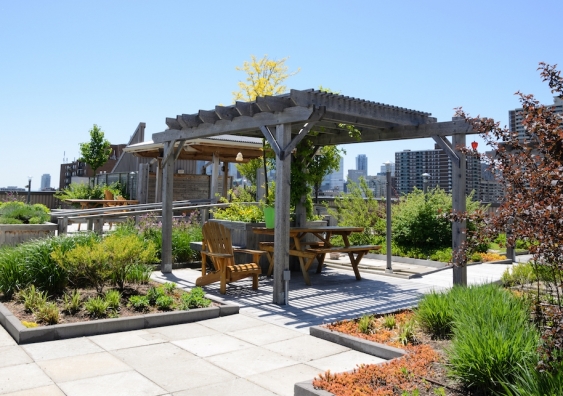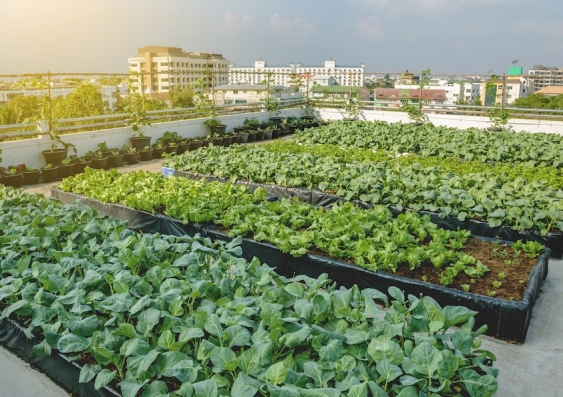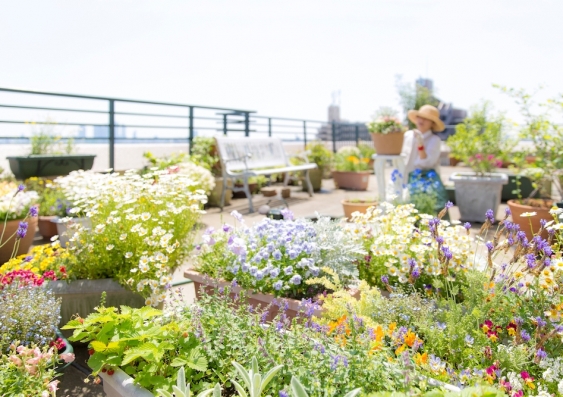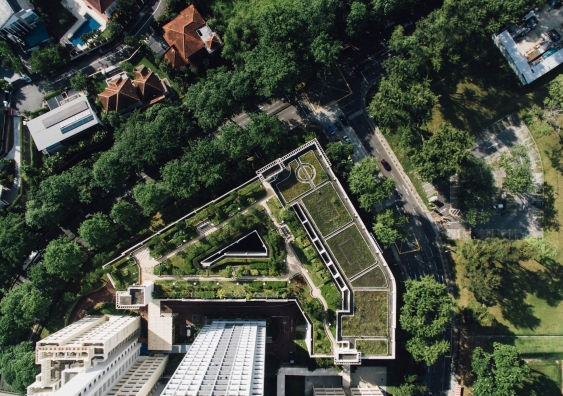Rooftop gardens: taking green spaces to new heights
With parks and other green spaces often at a premium on the ground, could we look to the skies for the answer?
With parks and other green spaces often at a premium on the ground, could we look to the skies for the answer?

Ben Knight
Â鶹Éçmadou Media & Content
+61 2 9385 8107
b.knight@unsw.edu.au
Rooftop gardens or sky gardens are becoming an increasingly common fixture on the roofs of buildings around the world. While they might seem like just a luxury on the surface, these sky-high landscapes are more essential to the community than what first meets the eye.
Landscape architect, Sara Padgett Kjaersgaard, Â鶹Éçmadou Built Environment, says we could see more gardens pop up on our rooftops in the future as a way to create more green spaces in increasingly urban areas.
“We need more green spaces wherever we can get them, and green roofs are a big part of the answer,” she says. “They’re not the only spaces we need…but they are part of a suite of semi-private and semi-public community spaces for people that provide essential health and wellbeing benefits.”Â
Ms Padgett Kjaersgaard says a rooftop garden can be perfect for people living in apartments who might not have the luxury of a backyard.
“There’s big pressure in metropolitan areas to deliver quality apartment-style living…so the creation of additional green space for people living in apartments to access is important,” she says.
Rooftop gardens are not only decorative, though it’s undeniable they have a desirable aesthetic. Many have BBQ facilities, group seating areas and small recreational areas for yoga or strength training. Some are even productive spaces, including the likes of chook pens, worm farms, fruit trees and communal vegetable gardens.

Some rooftop gardens are also used for agriculture. Photo: Shutterstock.
The big driver of rooftop gardens, however, is the social aspect. Where apartment living is scrutinised for not bringing people together, they’re a space that encourages residents to get to know their neighbours.
“People remark about the way these spaces enable socialising in ways [other] apartment common areas might not,” Ms Padgett Kjaersgaard says. “Particularly when it comes to connecting with neighbours and having more intergenerational engagement, those moments can thrive in those green roof spaces.”
Ms Padgett Kjaersgaard says a rooftop garden can also be friendly for the environment. They help retain stormwater, keep the average roof temperature cooler, reduce the energy consumption of the building, and collectively reduce the overall urban heat island effect by creating a cooler microclimate in the area.Â
They also have community health benefits. Many people have benefited from having an accessible green space on their rooftops during the COVID-19 lockdowns.
“We also know green space aids people’s ability to de-stress and achieve respite,” Ms Padgett Kjaersgaard says. “From a mental health perspective, they can go a long way to support preventative health measures in the community.”

Accessing a rooftop garden can be a great way to help relieve stress. Photo: Shutterstock.
While rooftop gardens are undeniably popular with residents, they’re also a win for developers.
“It’s a desirable feature for people who are going to purchase apartments…so there’s no doubt that having a green roof space that’s accessible is a value add to any development,” she says.
But unlike several countries around the world, Australia doesn’t have a mandate for green rooftops on new buildings. Similarly, legislation supporting the retrofitting of rooftop gardens on older buildings does not exist.
“We need to ensure green roofs become normalised in social housing too, so it’s not just for people who can afford a brand-new apartment,” Ms Padgett Kjaersgaard says.
“This includes equity around the delivery, the upkeep and the management of these spaces across the board to ensure they’re also high quality. This idea also extends to our regions, while a lot of focus has been on our cities, our regions are crying out for new types of green space such as green roofs.”
To do so, Ms Padgett Kjaersgaard says we should envisage green rooftops as being part of a network of green spaces delivering public benefits.
“We need green street-tree canopies, connected to well-designed public open spaces, connected to green roofs on [all] buildings to create a larger network of accessible green space,” she says.

Rooftops gardens connect to parks and canopies to create a network of green space. Photo: Unsplash.
The landscape architecture profession is lobbying for a suite of green infrastructure to be included in national policy via Infrastructure Australia’s Priority List. But it will be up to the public to help push it over the line.
“While everyone wants greener spaces, we must be prepared to view green infrastructure as its own asset class, that requires consistent high-level funding. As a community, we must be prepared to spend money on this investment to get the return we want,” Ms Padgett Kjaersgaard says.
“It’s now about individual residents seeing the benefits of an interconnected system of green infrastructure across a matrix of private, semi-private, semi-public and public lands. We must advocate government at all levels to ensure the inclusion of green roofs in policy is part of the delivery of a wider green spaces approach to our cities and regions.”